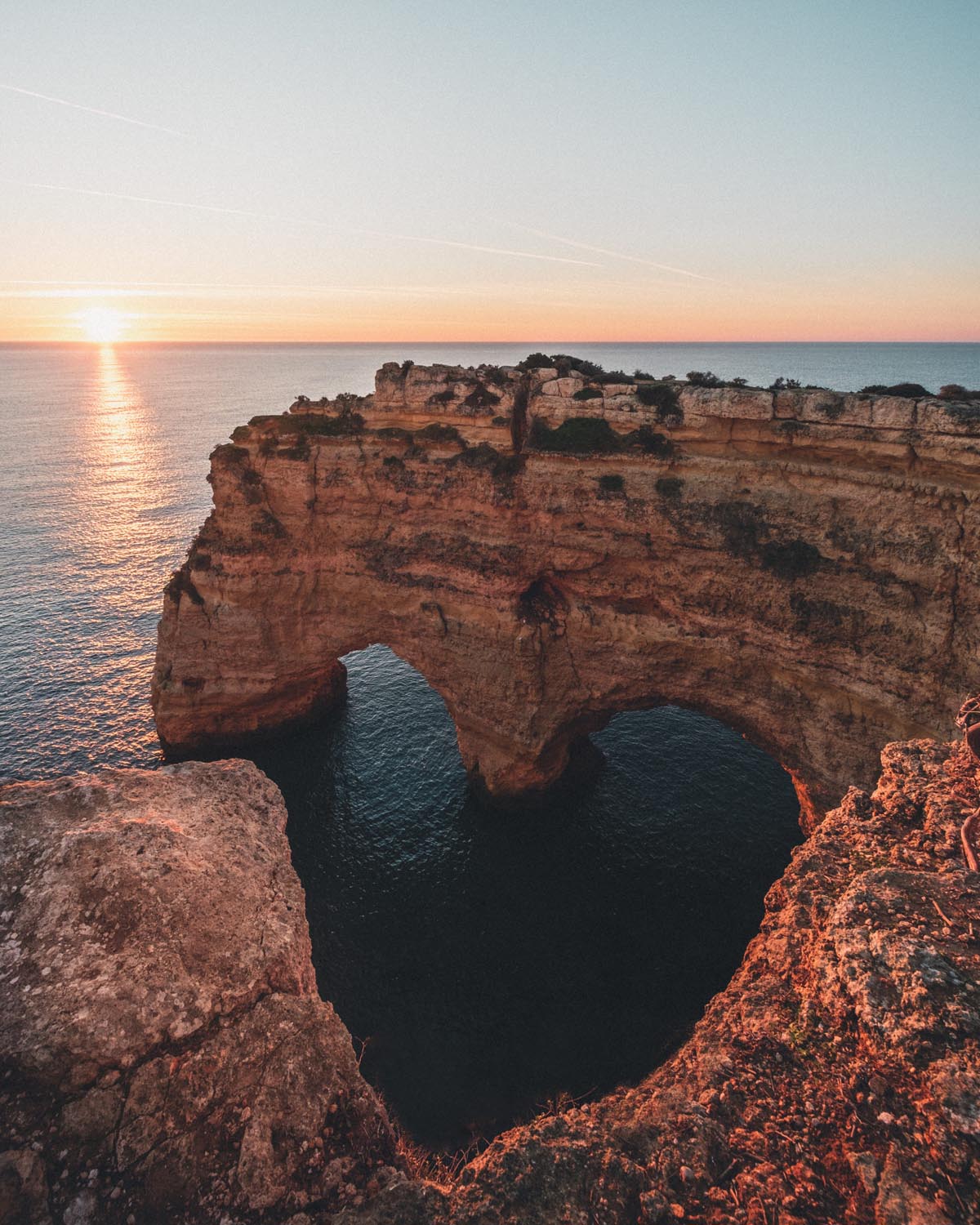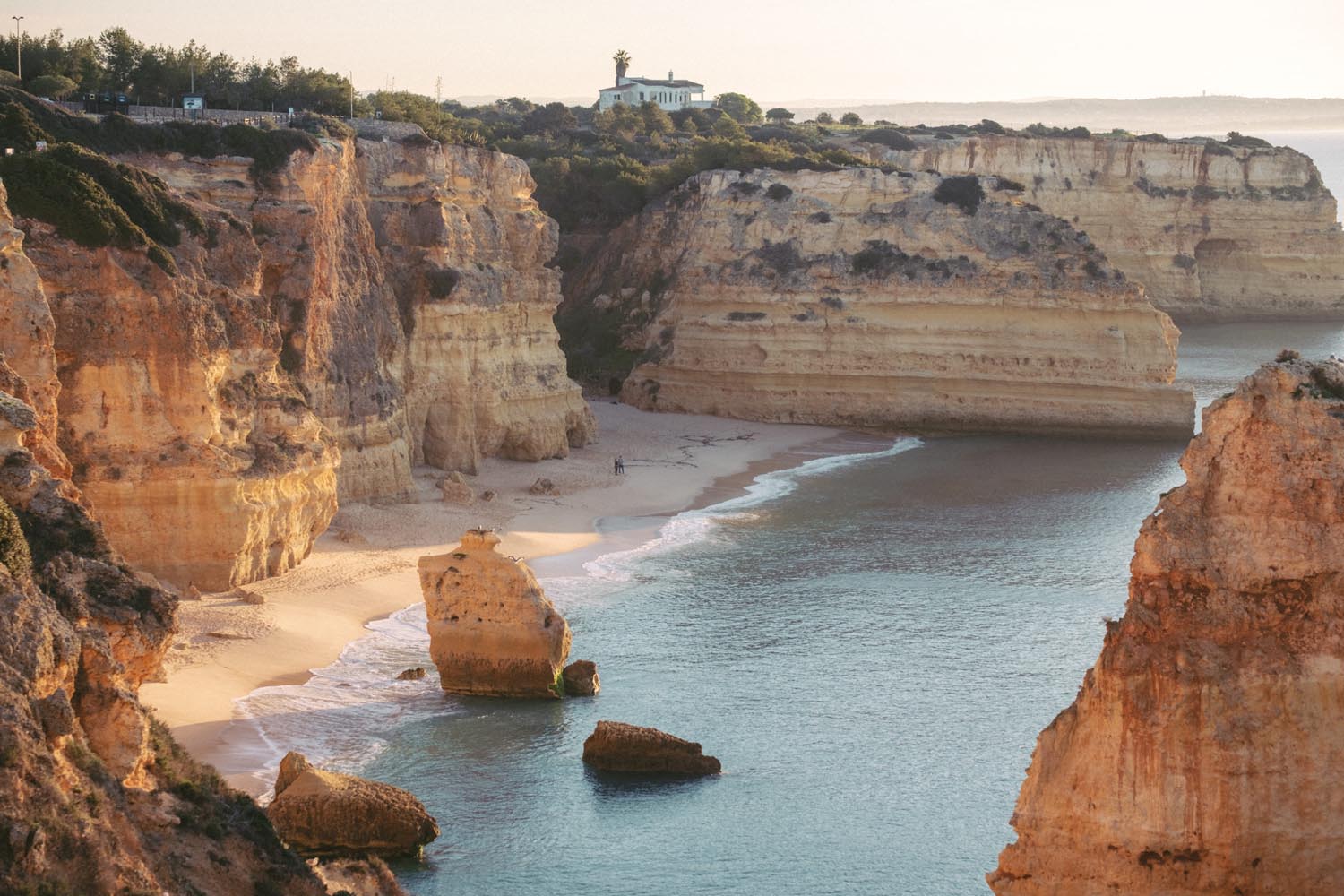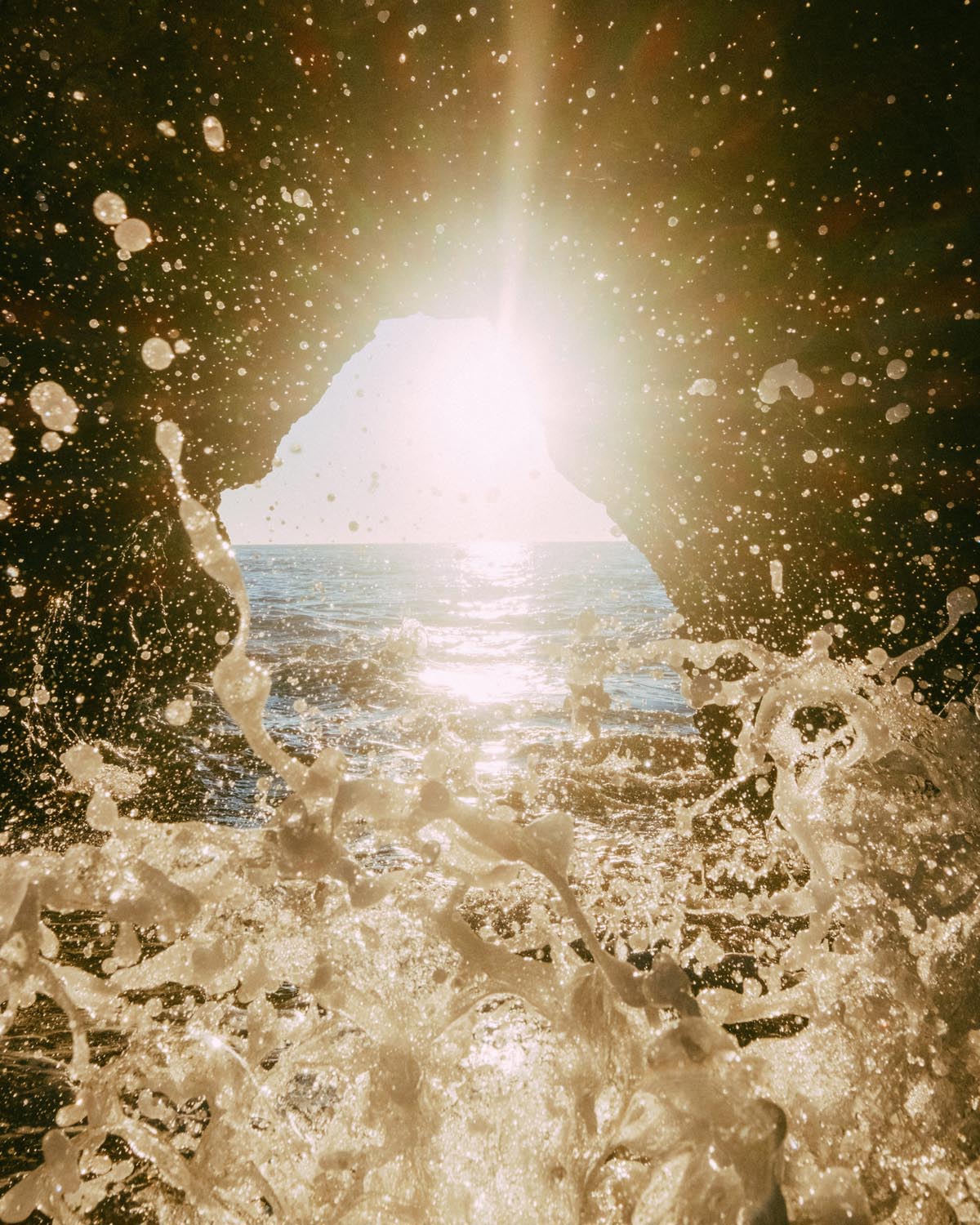It’s difficult to have a discussion about the best places for coastal photography without mentioning the Algarve region of Portugal. Home to over 150km of pristine coastline with soaring cliffs, golden beaches and incredible rock formations sculpted over millions of years by coastal abrasion, the Algarve has endless options to satisfy photographers. Throw in the area’s delightful climate and rich culture and you have a recipe for a superb trip.
On my 4 day trip to this region I stayed just outside the coastal city of Albufeira, and with minimal research I unearthed a wealth of stunning locations all within a 15 minute drive. I visited outside of peak season in early February, so I was blessed with having these locations all to myself, what I can only assume wouldn’t be the case in peak season. This blog will explain some of my favourite locations along this breathtaking coastline and give some tips and tricks for coastal photography with my trusty Fujifilm X-T3.
I don’t consider myself a traditional landscape photographer, and don’t tend to use filters past a polariser so this won’t include any tips for long exposure photography, often a favourite technique employed for seascape photography.
Praia De Marinha
I started my adventure by heading to Praia De Marinha, a beach famous for its looming cliffs and jutting sea pillars that are characteristic of the Algarve Coastline. As with many of the beaches in this area the parking is free and often located just above the beaches, meaning minimal effort is required to reach your desired destination. In the darkness of the early morning guided only by my headtorch I headed west from the car park around the clifftops. As the seemingly eternal black night was replaced by the warm hues of sunrise the coastal scene unfolding in front of me left me breathless.
As will be a common theme in this article, the sheer amount of different compositions at this location was frankly overwhelming. I continued out to the headland where there is a stunning double sea arch and decided on a wide composition encompassing the sheer cliff face to my right and all of the sea pillars visible on this coastline. I opted to fill some of the negative space and add some scale by standing in a slightly precarious position (not recommended). With the sun flooding in from the side, illuminating the cliff faces the scene was set and I was very happy with the image from this location. Even with underexposing my shots due to the harsh sunlight I am always confident in the Fujifilm raw files that I can raise the shadows to reveal all of the details. If the lighting is difficult, try bracketing your shots giving you additional frames that are underexposed and overexposed just in case.
Heart of the Algarve
This location is also home to the Heart of the Algarve, a composition made by using the clifftop lined up with the double sea arch.
After I was happy with these shots, I made the most of golden hour by walking around with my 55-200mm and capturing some of the closer details, eliminating the clutter often evident in wide angle images. With the added OIS in this lens sharp images are very possible even at the long end and with a slow shutter speed but as a general rule try and keep the shutter speed above your lens length i.e if you’re at 80mm the shutter speed has to be 1/80s or higher. I spotted a couple taking a morning stroll along the beach and grabbed a few long lens snaps of them. I love the long shadows you get at this time of morning, they really add depth and make an image three dimensional.
As I was using a tripod for these shots I usually opt to shoot in Aperture priority, as shutter speed is not an issue and I like to keep the ISO as low as possible, at 160 on the X-T3. This provides extremely detailed, crisp raw files that give you plenty of flexibility when editing.
Praia De Albandeira
My second location was another astonishing coastal formation, the Albandeira Arch. When arriving at the car park for Praia De Albandeira follow the path heading west. From here you will see this breaktaking sea arch. There aren’t many arches I’ve come across where it’s possible to walk out over them, which makes this location extra special. Again I opted to take a wide angle, without any foreground to really show the size of the arch. This spot was perfect for sunset as the sun sets in the west, giving a nice soft sidelight. As the sun rises and sets nearly perpendicular with the coastline, it’s easy to plan which locations are best for either sunrise or sunset. If in doubt, photopills is a really useful app for planning your shoots.
I was treated to some lovely pink high clouds for this sunset, and after walking onto the arch I grabbed a few images looking back at the cliffs with the clouds illuminated above them. Without any filters I opt to underexpose the image, retaining the highlights and then raising the shadows in editing. It’s often easier to retain the shadows as you can’t recover blown out highlights.
Praia De Castelo/ Praia da Maré das Porcas
I spent the last morning of my trip at Praia De Castelo. This place really encapsulates what the Algarve coastline is all about, rugged cliffs, an ensemble of different rock formations, huge holes down to sea level formed by erosion and enough compositions for a week. Arriving well before sunrise gives you plenty of time to find a composition you’re happy with. Before the sun has risen and by shooting away from where the sun will rise, you often get some pink hues in the sky that I love to shoot and edit. This gives really soft light for photographs.
After this, I carefully navigated around the clifftops to shoot the cliffs as they got illuminated by the first rays of light from the sun. I can’t stress how careful you need to be, the mesozoic limestone in this area is soft and crumbly, and getting too close to the edge is extremely dangerous. In getting this shot I waited for the waves to hit the cliffs, adding some drama to the scene.
After this, I noticed the waves were considerably larger than previous mornings so headed down to the beach to see if I could get some closeups of the waves, or water droplets illuminated by the sun. I found a little cave that the sun was shining through, and waves crashing against a rock. Not prepared at all for getting wet, I crouched down low behind a rock waiting for a bigger wave to crash through the hole. With some patience I was rewarded. To freeze the water movement I used a shutter speed of 1/2000s. I love how the sun lights up the water droplets. Disclaimer, I got extremely wet feet for this shot so I’d recommend boots/gaiters or even wellies if you have them! Sand, salt and water can wreak havoc on your equipment. Although the XT-3 Is weather resistant I always protect my glass with UV filters, and wipe the camera down immediately after it gets wet. I also gave my camera a deep clean every night after subjecting it to heavy use throughout each day.
I then moved onto the beach, having the option to use the sidelight to create some big shadows. The waves were pretty big here too so with a longer lens this time I managed to snap some more shots of the waves hitting the shore.
Although I didn’t manage it this trip, my final tip would be to look for reflections. Water has great reflective qualities and you may find interesting reflections in the thin layers of water near the shore, or in little pools around the beaches/cliffsides.
The variety of photography on offer out here was astonishing, and I came back with so many photos that were unexpected just from exploring a little further and being ok with getting me and my equipment a little wet. Just be sure to keep your equipment clean and protect it as much as possible!
I hope you enjoyed this little blog about the Algarve, a place I will hopefully be returning to soon.































































